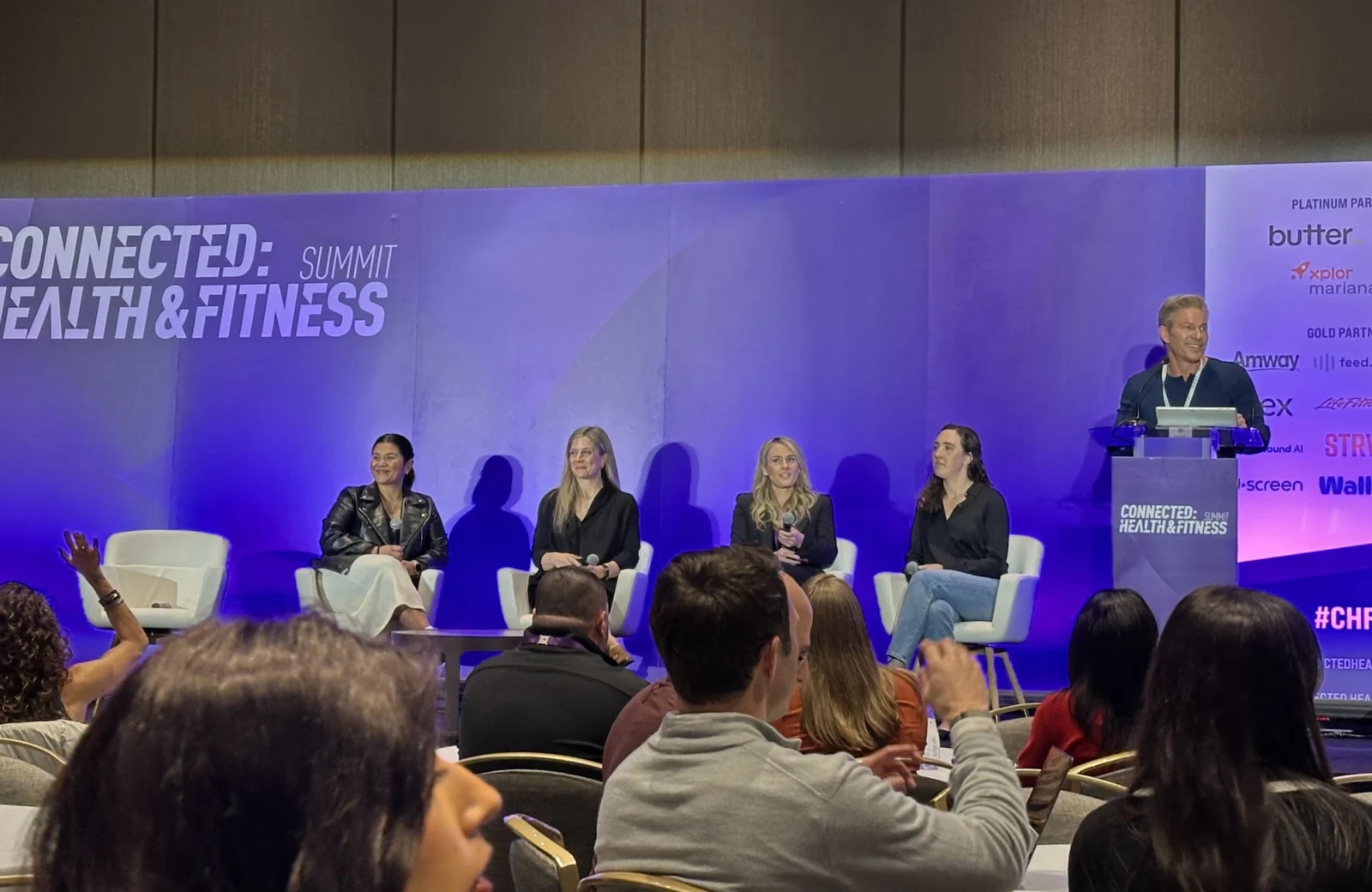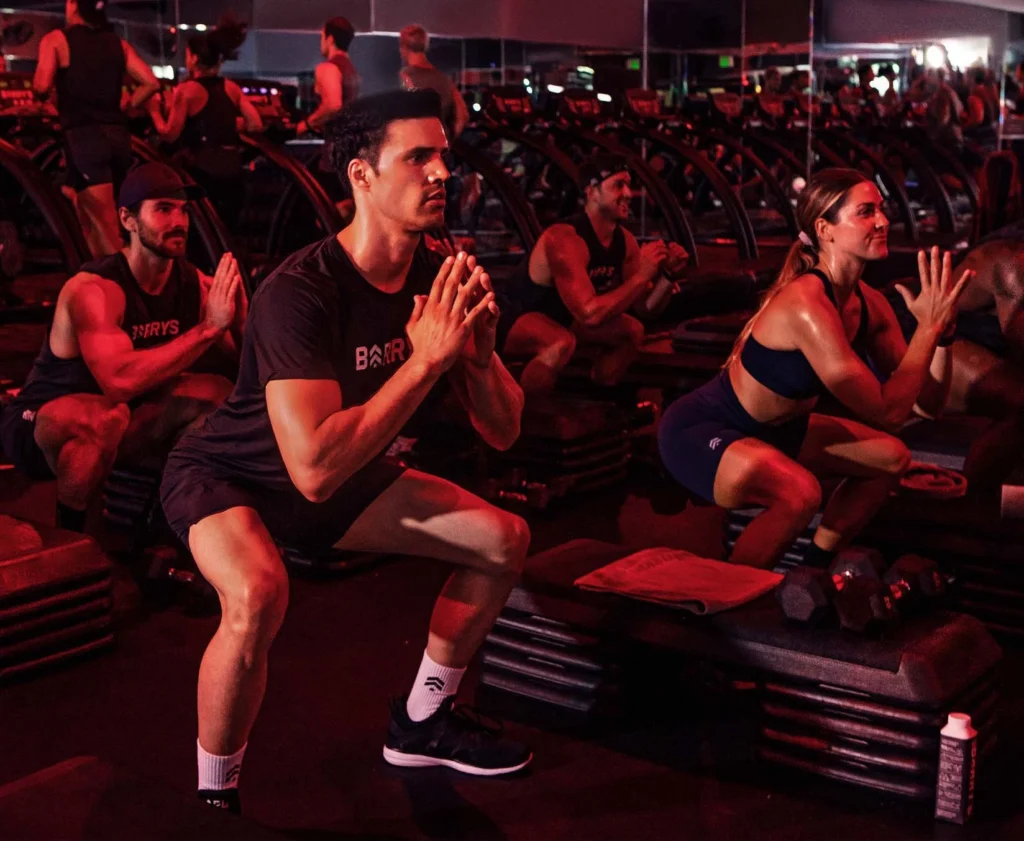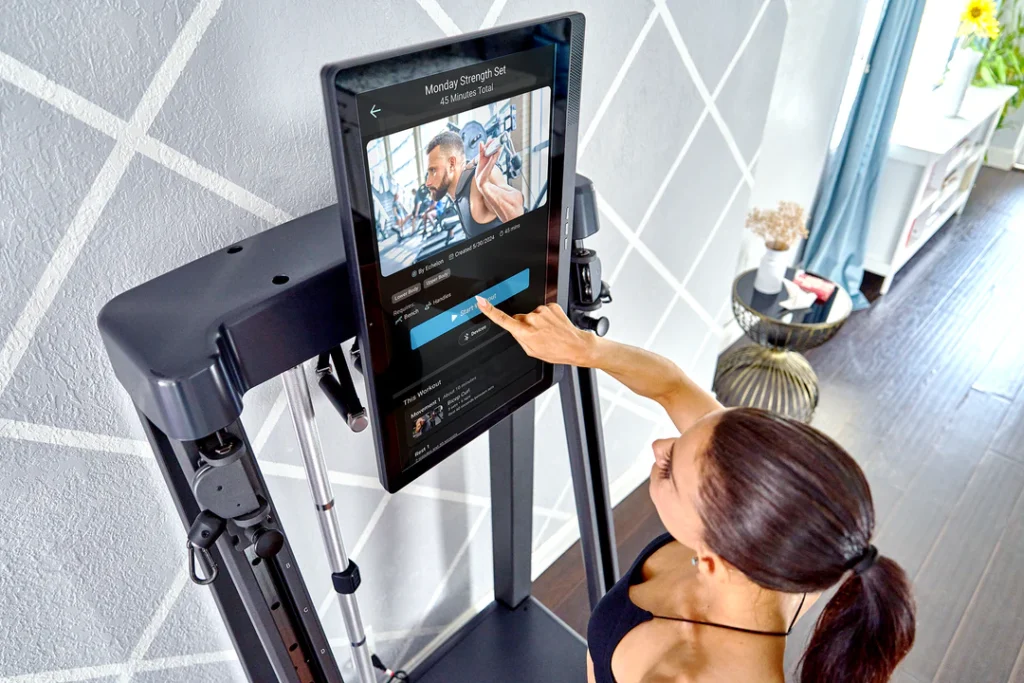Barry’s, Flex, Les Mills & Whoop Talk Brand-Building in the Digital Era

From influencer campaigns to making hardcore fitness approachable, execs from three top brands dish on their marketing strategies in 2025
Fitness enthusiasts are spoiled for choice these days, with enough workout classes, wellness concepts and tech gadgets to fill their calendars many times over.
For marketers and brand-builders, navigating this landscape requires a deft hand – and some outside-the-box thinking.
At the Connected: Health & Fitness Summit 2025 held in Los Angeles this week, executives from top brands including Barry’s, Flex, Les Mills and Whoop took the stage to share how they’re building brand loyalty in the digital era.
ATN breaks down some of the key takeaways from their conversation, including Barry’s balancing act, Les Mills’ targeted approach to influencer marketing and Whoop’s mission to turn wearables into a lifestyle.
Barry’s Looks To Scale a Unique Culture
Jackie Lamping, a Silicon Valley tech vet, joined Barry’s as its chief marketing officer this past September. She takes over at a pivotal time for the iconic group fitness brand, which just received a strategic investment from Princeton Equity Group to drive expansion in the United States and international markets.
Barry’s is a cult favorite among fitness enthusiasts on America’s coasts and in big cities across the world, but the brand won’t be without its challenges as it looks to scale beyond an already impressive 89 locations in 15 countries.
“Barry’s is a workout that I would categorize as probably high friction to join at first. … there’s an intimidation factor with the reputation of the brand,” Lamping said during a panel discussion at the Summit. “We’ve put two things in place to solve for that.”
The strategies include adding a “first-timer experience” that guides new Barry’s members through their first class with touches including a handwritten note. The other strategy is flexible pricing strategies such as the ability to purchase a drop-in class and cancel a membership at any time.

As Barry’s seeks to become welcoming to all types of fitness consumers, it will need to do so without compromising the culture that’s made it stand out in the boutique fitness scene since its founding in 1998.
“What we want to do is obviously execute against that growth plan but not lose a community-personal feeling of coming in and your GM knows your name, you know the names of your fellow community members and the next person on the (treadmill),” Lamping said. “How do we make sure that we’re scaling while continuing to focus on the hospitality elements of what makes Barry’s so amazing?”
Les Mills Takes a Measured Approach to Influencer Marketing
When it comes to influencer marketing, sometimes it’s better to think small, noted Tabitha Green, U.S. head of marketing and B2B digital content for Les Mills.
Green noted that Les Mills prefers to pursue social media partnerships with people who are already familiar with the group fitness brand’s signature workout classes like Bodypump and Bodycombat.
“One of the things that we’re doing differently is instead of using some of our funds to invest in influencers outside of our space, (we’re) really trying to help create more advocates and create more influencers that already have an affinity to our brand,” Green said.
She explains that Les Mills invests in helping these devotees “grow their communities so that then we can leverage them as internal influencers, as opposed to hiring that person that has a 500,000 (person) following that may or may not have taken the Bodypump class.”
While it might be tempting for fitness brands to chase mega-influencers, there are financial and community-building benefits to aligning with smaller creators who are enthusiastic about your brand, since they can speak passionately about it to their followers.
“It’s more authentic when you can invest in an advocate that already has a huge brand affinity and might have a smaller … audience, but the quality of their audience is a lot stronger,” Green noted.

Green also stressed the importance of fitness brands identifying their target audience before spending big on marketing, especially on social media.
“Not all platforms are built the same; they reach different audiences,” she said. “Meta reaches … primarily people (from ages) 35 to maybe 54, and we know that Tik Tok is the platform where you want to reach … Gen Alpha and Gen Z.”
Whoop Aims To Humanize Wearables
Whoop has carved out an impressive niche as the wearable of choice for hardcore fitness enthusiasts. While the Boston-based brand tracks data from sleep to strength training strain, it’s also taking strides to humanize the experience people have while wearing a Whoop.
“We collect a bazillion data points; that can be a really cold experience (for users),” Whoop’s vice president of brand Tatiana Kuzmowycz said at the Summit. “We can market to you, we can show you the data, (but) everybody can do that. How do we then take that to a level that … creates affinity for the brand and a uniqueness to it?”
In its marketing and advertising campaigns, Whoop seeks to position itself as a lifestyle brand for health and wellness enthusiasts rather than just a fitness tracker.
“Nobody wants to be a product or tool,” Kuzmowycz said. “Those are instantly replaceable. The next thing is going to come out, (and) someone’s going to beat you on price. You actually have to be building something that is considerably more compelling.”

To tell its brand story, Whoop leans on partnerships with top athletes, including soccer legend Cristiano Ronaldo. Whoop is highly intentional about the way it curates partnerships – run-of-the-mill athlete endorsements won’t do for a brand that’s trying to create meaningful connection with its consumers.
“When we bring up partners, what we ask for is authenticity and intimacy, meaning they have to share their data with us,” Kuzmowycz said. “When we worked with Ronaldo, we literally shot at his house; he was in a bathtub in his house. It was one of the most chaotic moments in my career. But we have to be able to actually bring (our partners) to life.”
For Flex, Digital Payment Solutions Are Essential
For fitness and wellness brands, getting people to your website is only half the battle when it comes to customer acquisition and retention.
Sam O’Keefe, the co-founder and CEO of Flex, a payments platform that helps fitness and wellness brands accept Health Savings Account (HSA) and Flexible Spending Account (FSA) funds, pointed to the importance of having a robust and user-friendly online check-out experience.
“Once people have discovered your brand, they’ve landed on your page and they’re considering checking out, what is that experience like?” O’Keefe said. “That whole user journey is a reflection of your brand.”
Flex has partnered with top fitness brands including Echelon and Tempo to streamline the process of accepting HSA/FSA funds during online check-out. Besides accepting HSA/FSA funds, O’Keefe says fitness and wellness brands should ensure they’re leveraging other alternative payment methods like “buy now, pay later” and the ability to accept ACH payments.
“All of these different payment methods have been demonstrated to not only attract users but really increase conversion,” O’Keefe said.

Alternative payment methods can also help brands reach consumers who might not have been able to afford their product or service using traditional methods, driving additional revenue.
“Through offering alternative methods of check-out, you can actually make things more financially accessible,” O’Keefe added.
Eager to hear more elite marketers discuss their strategies for the future of fitness and wellness? Register now for the ATN Innovation Summit 2025, a can’t-miss two-day event to be held on June 17th and 18th in New York City featuring the biggest names, brands, and ideas across fitness, health, and wellness.



